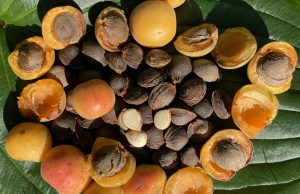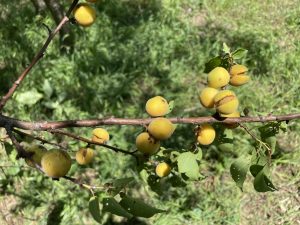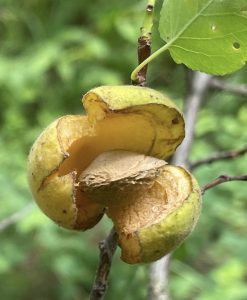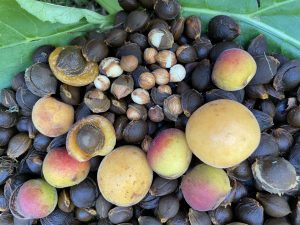Experience-Seeds-Knowledge-Plant Discoveries-Ecological Enrichment-Join Now Click Here!

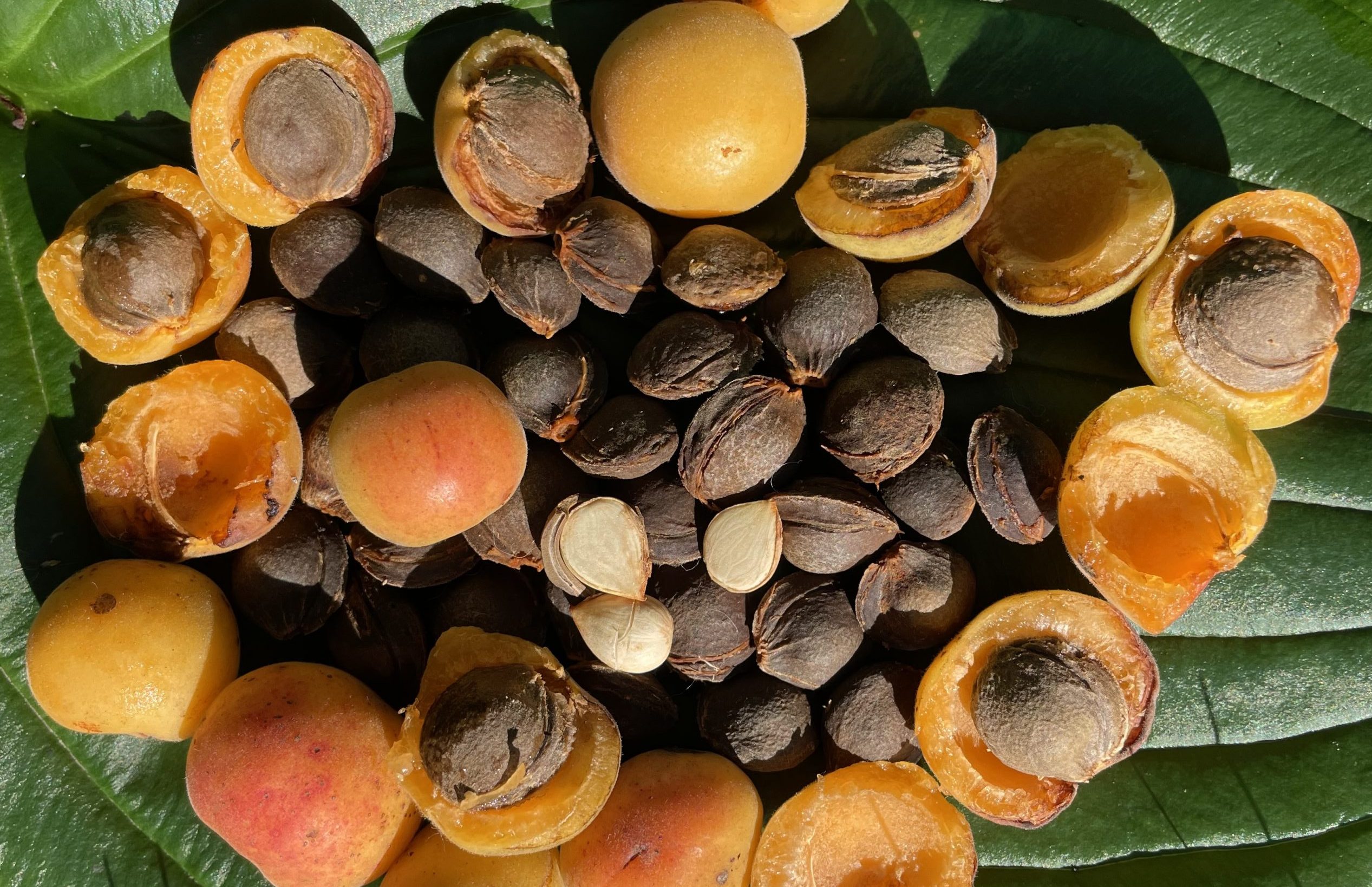
Briana Apricot-From Seed-One Great Fruit Nut Tree
Briana Apricots Harvested this Year from Three Generations of Trees
Mention growing apricots in the north and often you will hear “Not apricots, they flower too early”. But at the same time the question of its possibilities and practicalities arises. The apricot shares a long history with humans as both the seeds and the fruit create a certain reverence when it comes to delicious tree ripened fruit as well as an edible almond like kernel. The health benefits attached to both the fruit and nut are now well known. Yet to grow them is a bit tricky. In Michigan, rarely are there any commercial apricot plantings. There use to be a variety called Goldcot created in Michigan. But only a perfect location can guarantee a yield of most apricots. I have many of those at my farm too. They rarely fruit.
I was fortunate to grow from seed two plants of Prunus sibirica from an arboretum collection. This particular species is not well known in North American and is considered the hardiest species apricot growing into zone 3. Now over 40 years later and several generations, that turned out to be a good idea as far as expanding the range of the apricot. Here are a few of my apricot discoveries of the Briana apricot.
- They reproduce true to seed meaning the plants produce fruits that are the same as the parent tree in flavor and yield. Some variation exists in the amount of pulp surrounding the pit. Fruits are produced in dense clusters on spur type plants much higher than other typical seedling apricots. Often the fruit will split releasing the seed. The fruit does not rot when the fruit cracks. The fruit tends to be drier than most commercial apricots.
- Briana apricot has a strong apricot flavor with a dry flesh and dense pulp. This is one of its benefits as both the sweet and tart ratio is perfect. The fruit size is small from one inch to one and half inches in size. This selection we send as scionwood has a larger fruit exterior with minimal cracking and can be harvested the same way almonds are done by shaking. The fruit is solid enough it is does break apart and could be shipped fully ripened without decay.The splitting makes it easier to extract the seed and consumption of the fruit as it comes out clean free of pulp attached to it.
- Unlike all other seedling apricots, the insect and disease damage is much reduced. Curculio and black spot are found but only a teeny fraction compared to standard apricots. As a result few fruits are lost due to June drop. But it would likely benefit from some control to reduce damage to the fruit. I have used spinosad and neem for this purpose.
- The early flowering habit is still an issue with this species however the timing of full flower is reduced meaning fruit set is quicker and light frosts do not damage the young developing fruit as well as the bud stage. Flowering occurs a few days later than most commercial apricots. Basically the flowering period is much shorter than commercial apricots. Large populations of bees and flies are pollinating the flowers including the honey bee if the the temperatures are high enough.
- From seed, trees will produce in 3-5 years from seed about half the time of a normal or typical seedling apricot. Seedling trees are more resilient that grafted trees and have no issue with rootstock compatibility in a cold climate like Michigan compared to plum rootstocks currently used. Plants will live twice as long or more than conventional grafted trees.
Every now and then I think back to when I first planted apricots at my farm. I had this whole plan inspired by Robert Kurle then President of the North American Fruit Explorers to put in an apricot orchard. I did not follow through with that due to the cost of grafted trees and care needed. From that point forward I grew apricot pits found at the grocery store, farm markets here in Michigan as well as the parks in New Mexico. I always think of the expression by comedian Rodney Dangerfield, ‘tough crowd, tough crowd’ as even the idea of apricots was never met with enthusiasm by other growers. When it became apparent that this particular strain was so well adapted to my farm, I planted many of them on northern and western slopes to delay dormancy a bit to evade the all damaging frost. Sometimes late at night after checking the frost warnings in early spring, I would put up a sort of mental shrine to the apricot blossoms hoping for little damage by frost that night. That was not reliable of course and I soon discovered frost in itself was not always to blame. The amount of pollinators was off the charts. Even in the middle of March, you would see dense clouds of bees and flies around the flowers. Hey, what else flowers at that time anyway? It is so blissful to enjoy the flowers. The yo-yo temperatures were hard to deal with. Overtime, I soon discovered a no crop meant a massive crop the following year. That is were I am this year in 2022. Slowly but surely my care of the trees has resulted in a consistent yield. Bob Kurle mentioned this to me many years ago. Even in off years, keep the trees healthy.
A tip on fertilizing apricots: Fertilize heavy early in the fruiting season and again in the fall. I found that by using gypsum and pelletized chicken manure, both the return blossom and yield is greatly increased. Believe it or not, apricots are heavy feeders and will respond during fruiting season as the plant increases the mass of its root system. Having fertilizer slowly break down over this period is greatly beneficial. Hence the reason for chicken manure and its insoluble nitrogen and gypsum to aid in the absorption of the nitrogen and other compounds like iron. Small amounts of spray are used on producing our trees-neem, monterey spinosad and pyrethrum. This works to prevent both black spot to form on the fruit as well as stop plum curculio damage.
For spacing use a 20 by 30 or 20 by 20 ft. 109 trees per acre or if hedgerow use a 5-15 spacing between trees. For pruning try to avoid the narrow crotch angles that can result in split limbs when there is a heavy crop or wind storms.
For seeds of Briana apricot as well as seeds and scions click here.
